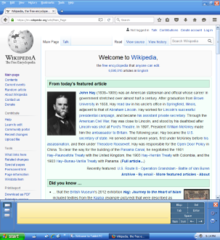
The two major editions are Windows XP Home Edition, designed for home users, and Windows XP Professional, designed for business and power users. XP Professional contains advanced features that the average home user would not use. However, these features are not necessarily missing from XP Home. They are simply disabled, but are there and can become functional. These releases were made available at retail outlets that sell computer software, and were preinstalled on computers sold by major computer manufacturers. As of mid-2008, both editions continue to be sold. A third edition, called Windows XP Media Center Edition, was introduced in 2002 and was updated every year until 2006 to incorporate new digital media, broadcast television and Media Center Extendercapabilities. Unlike the Home and Professional edition, it was never made available for retail purchase, and was typically either sold through OEM channels, or was preinstalled on computers that were typically marketed as "media center PCs".
Two different 64-bit editions were made available. One, designed specifically for Itanium-based workstations, was introduced in 2001 at around the same time as the Home and Professional editions, but was discontinued a few years later when vendors of Itanium hardware stopped selling workstation-class machines due to low sales. The other, called Windows XP Professional x64 Edition, supports the x86-64 extension. x86-64 was implemented first by AMD as "AMD64," found in AMD's Opteron and Athlon 64 chips, and later implemented by Intel as "Intel 64" (formerly known as IA-32e and EM64T), found in some of Intel's Pentium 4 and later chips.
Windows XP Tablet PC Edition was produced for a class of specially designed notebook/laptop computers called tablet PCs. It is compatible with a pen-sensitive screen, supporting handwritten notes and portrait-oriented screens.
Microsoft also released Windows XP Embedded, an edition for specific consumer electronics, set-top boxes, kiosks/ATMs, medical devices, arcade video games, point-of-sale terminals, and Voice over Internet Protocol (VoIP) components. In July 2006, Microsoft released Windows Fundamentals for Legacy PCs, a thin client version of Windows XP Embedded which targets older machines (as early as the original Pentium). It is only available to Software Assurance customers. It is intended for corporate customers who may wish to upgrade to Windows XP so they can take advantage of its security and management capabilities, but cannot afford to purchase new hardware.
[edit]Editions for specific market
Windows XP Starter Edition is a lower-cost edition of Windows XP available in Thailand, Indonesia, Russia, India, Colombia, Brazil, Argentina, Peru, Bolivia, Chile, Mexico, Ecuador, Uruguay, Pakistan and Venezuela. It is similar to Windows XP Home, but is limited to low-end hardware, can only run three programs at a time, and has some other features either removed or disabled by default. Each country's edition is also customized for that country, including desktop backgrounds of popular locations, localized help features for those who may not speak English, and other default settings designed for easier use than typical Windows XP installations. The Malaysian version, for example, contains a desktop background of the Kuala Lumpur skyline.
In March 2004, the European Commission fined Microsoft €497 million (US$603 million) and ordered the company to provide a version of Windows without Windows Media Player. The Commission concluded that Microsoft "broke European Union competition law by leveraging its near monopoly in the market for PC operating systems onto the markets for work group server operating systems and for media players." After unsuccessful appeals in 2004 and 2005, Microsoft reached an agreement with the Commission where it would release a court-compliant version, Windows XP Edition N. This version does not include the company's Windows Media Player but instead encourages users to pick and download their own media player. Microsoft wanted to call this version Reduced Media Edition,but EU regulators objected and suggested the Edition N name, with the N signifying "not with Media Player" for both Home and Professional editions of Windows XP. Because it is sold at the same price as the version with Windows Media Player included, Dell,Hewlett-Packard, Lenovo and Fujitsu Siemens have chosen not to stock the product. However, Dell did offer the operating system for a short time. Consumer interest has been low, with roughly 1,500 units shipped to OEMs, and no reported sales to consumers.
In December 2005, the Korean Fair Trade Commission ordered Microsoft to make available editions of Windows XP and Windows Server 2003 that do not contain Windows Media Player or Windows Messenger.[43] Like the European Commission decision, this decision was based on the grounds that Microsoft had abused its dominant position in the market to push other products onto consumers. Unlike that decision, however, Microsoft was also forced to withdraw the non-compliant versions of Windows from the South Korean market. This decision resulted in Microsoft's releasing "K" and "KN" variants of the Home and Professional editions in August 2006.
That same year, Microsoft also released two additional editions of Windows XP Home Edition directed towards subscription-based and pay-as-you-go pricing models. These editions, released as part of Microsoft's FlexGo initiative, are used in conjunction with a hardware component to enforce time limitations on the usage of Windows. Its target market is emerging economies such as Brazil and Vietnam.

No comments:
Post a Comment